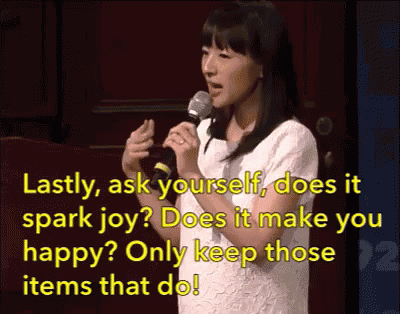Tips to find a greener style without sacrificing your vibe
By: Maja
Did you know that approximately 60% of our clothing contains plastic in the form of synthetic fibres like polyester or nylon? 😨 This reality can encourage us to make more conscious choices when it comes to getting dressed. That’s why today I want to share with you a quick guide to building a closet smartly, sustainably, and on a budget, promoting a more eco-friendly and accessible lifestyle for everyone 🌏.
1. Identify the Styles that Bring You Joy
The first thing I’d recommend is to reflect on what specific styles and clothes bring you joy. What are the pieces that define you as a person, and, more importantly, make you feel comfortable and bring up good feels when wearing them? Everyone has a different style, but there are certain foundations that can help you shape yours.
Minimalist – Simple and clean. Neutral colours, tailored pieces, and a less-is-more approach.
Bohemian (Boho) – Relaxed, earthy, and artistic. Flowy fabrics, fringe, vintage, and natural tones.
Preppy – Polished and collegiate. Polos, loafers, shirts.
Grunge – Rebellious and rugged. Flannel shirts, ripped jeans, band tees, and combat boots.
Vintage – Retro-inspired. Clothing from or mimicking past decades (example, ’50s dresses, ’80s denim).
Chic – Elegant and fashionable. Sleek cuts, high-end accessories, and a polished look.
Athleisure – Sporty yet stylish. Leggings, trainers, hoodies—worn both casually and for workouts.
Gothic – Dark and dramatic. Black clothing, lace, leather, and heavy accessories.
Casual – Comfortable and everyday. Jeans, T-shirts, sneakers—easygoing and versatile.
Streetwear – Urban and edgy. Graphic tees, hoodies, sneakers, and oversized silhouettes.
2. Time to Declutter
After you’ve identified your style and the aesthetic that makes you happy, it’s time to look at what already aligns with that in your wardrobe, and what doesn’t.
Go through your clothes, notice how each item makes you feel and be honest about what still fits your style and brings you genuine joy. Once you’ve made your selections, clean and pack the pieces to donate to your nearest thrift store, or you can also organize a clothing swap with friends!
Test your knowledge!
If you are reading this blog, you probably know our fashion choices affect our planet. But, how much do you reaaaally know? 🤭 Test your facts with this quiz →
3. More Intention, Fewer Trends
Now that you’ve made space and know what brings you joy, it’s time to plan your staple pieces. I highly recommend separating trendy items from essentials. Try the 80/20 rule: build your closet around 80% basic, versatile pieces that help you create multiple outfits, and reserve 20% for your favourite trendier items. (Keep in mind that trends are cyclical; they can fade in 6 months or last 5 to 10 years.)
4. Go Thrifting!
Thrifting isn’t just a fun and budget-friendly way to refresh your style; it’s also a powerful step toward reducing the environmental impact of the fashion industry. By knowing your style, clearing out your closet, exploring new second-hand stores, you're contributing to a more conscious and circular way of consuming fashion.
📌 Recommended Read: Best Thrifting Stores in Mississauga
Also, remember that as a Sheridan student, you have access to the Dressed for Success Program, where you can find some gems to add to your closet — for free!
Join the Plastic Free movement by starting with your wardrobe, and share the message with others. Together, we can make fashion part of the solution for climate change, not the problem.
New to our Dressed for Success Program?
Style meets sustainability with Dressed for Success – a program designed by students, for students, where you can find free, lightly worn clothes. Just come to our office and ask our CSRs for support and join us in reducing fashion waste, embracing circular fashion, and making conscious choices one outfit at a time. ♻️













April 22 marks Earth Day, a time when we take action to support our planet and adopt new green practices. Did you know that food can make a large difference to our environment? Check out Kaitlyn’s top 3 tips for eating sustainably while helping protect the planet. 🌍